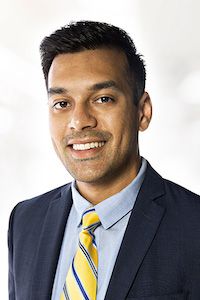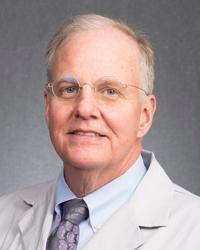Feature
Article
Academic, private practice urologists collaborate to change BPH reimbursement
Author(s):
"We really aimed to affect 3 different contraindications and instead achieved retirement of the entire policy, which, we think, really opens up this wonderful technology to literally hundreds of thousands more patients across the country," says Arpeet Shah, MD.
Recently, a joint effort led by Arpeet Shah, MD, and Kevin T. McVary, MD, led to Medicare contractor National Government Services, Inc (NGS), rescinding reimbursement requirements involving the Rezum procedure for benign prostatic hyperplasia (BPH). Shah is a urologist with Associated Urological Specialists in Illinois and McVary is a professor of urology at Loyola University Medical Center in Maywood, Illinois.
This interview was edited for length and clarity.
Could you describe the impetus and background for your efforts regarding reimbursement for Rezum?
Arpeet Shah, MD

Shah: We knew that Rezum is a successful procedure for BPH with good, lasting outcomes. That was demonstrated by many studies, and several were prospectively done by Dr. McVary. It was clear, after years of usage, that it was a treatment that is suitable for a lot of men with BPH. However, our NGS guidelines; specifically, our regional policies, were restrictive on covering the procedure. Specifically, there are a lot of contraindications for the procedure that didn't align with other BPH procedures with similar data. With all that red tape, urologists locally, in my practice, and then also when we go to conferences or talk amongst our national group, would always complain about all the red tape it would take to get the procedure approved. That frustration was really evident amongst myself, my practice, and the urologists that I work with. One day, I was brainstorming ideas on how to change these criteria. I thought, why don't we just get experts in the field together to review the data, and write a joint letter to the NGS and see if we could change it? With a lot of coordinated effort, urologists from all across the country coming together, both academic and private, we were able to make significant changes with this policy.
Kevin T. McVary, MD

McVary: The restrictions in NGS really grew out of the initial protocol for the pivotal trial. They didn't come to it out of the blue; they came to it because of kind of the conservative nature of which FDA submissions occur. What was different here is that they kept the handcuffs on the Rezum technology even after the technique was approved by the FDA and in widespread practice. But that wasn't the same case in some of the other therapies that Dr. Shah alluded to - the other MISTs, and more traditional, standard therapy. They weren't duplicitous in these restrictions, but it was interesting that Rezum was still kind of kept in the closet in many aspects.
How did the 2 of you come to work together on this?
Shah: Dr. McVary and I go back to our time at Loyola together. We only overlapped for, I think, a year; it was my fellowship year. But we've formed a good working relationship, and that continued to grow as I moved on to private practice, still locally within Chicago near Loyola, where Dr. McVary was. When I was thinking about starting up this project, I was so lucky to have Dr. McVary in our backyard, the lead author of the pivotal trial for Rezum. It certainly would not have made any sense to do this without him.
McVary: Dr. Shah is known in the Chicago area for adopting this technology pretty fast. I obviously was there from the beginning , even when it was only given in animal models all the way through the FDA approval process and beyond.
What did this process entail? How did AI play a role?
McVary: There are 3 categories of obstruction that we found that clinically were not relevant to restricting Rezum. One was PSA [prostate-specific antigen] restriction and a history of prostate cancer. When we wrote the pivotal trial, we didn't want Rezum to be considered a cancer treatment, so we excluded those patients. That's kind of a standard FDA pathway. But what we were coming up against is men who were on active surveillance who have low-volume, low-risk prostate cancer, but their BPH is giving them trouble. But this was being disallowed. Another was a flow rate restriction. To qualify for the trial, the flow rate had to be a pretty low level, and again, that is standard FDA protocol. Third was receipt of prior surgical therapy for BPH. As all this came about, when we first started talking, I thought, if we're going to try and roll some of these restrictions back, we should break it into the 3 problem areas and not try to do 3 in 1. So we broke it down into 3 problems. In 2 of the areas, I had a number of papers on the topic that I had written, as well as additional research that was quite relevant to our quandary, like if you treat a man with BPH who has prostate cancer and is on active surveillance, you can actually follow them very safely over time and detect those men whose prostate cancer was more clinically relevant. In those prior studies we examined Green Light, PVP; we looked at open simple procedures, bipolar TURP, and holmium technologies but not Rezum, because it wasn't invented yet. We took this accumulated data and used that to support how we practice and how we needed to practice. We had confidence that rezum could be applied in this fashion having done so with the other technologies. We broke the restrictions into the 3 groups, and then supplied peer-reviewed documentation for 2 of those categories (PSA-prostate cancer and previous surgery). With 1 category (flow rate restrictions), we really didn't have an answer for them. I think that was a really good approach, because then the NGS could look at each of those siloed restrictions separately and say, "You're focusing in on that problem. Here are the data that address that." And so we could win on 2 and not the third restriction or perhaps a partia roll back, but we wouldn't have to fail entirely. We could win piecemeal.
Shah: Like Dr. McVary, said, it was very much data driven for most of the categories, and, we felt, a little bit common sense driven with the flow rate restriction category. Although we didn't have great published literature on it, there was a lot of common-sense evidence that we could source to. In terms of AI, I don't want to make it seem like it was a huge part of our endeavor. But it certainly helped round out our search. The ways we specifically utilized it was to make sure we didn't miss any literature that we might have not picked up on just on what we were aware of in terms of studies or what we would do in terms of Google searches. So AI helped us with that. It helped with the final editing of some of the vocabulary that we may have used in the letters to make it more polished. But it was not a central portion. We feel like AI should not be a central portion of how we lead these initiatives; it was just kind of neat to test out some of the tools that we have in terms of AI and see if they were worthwhile to this process. We also used AI and some of the note-takings that we had for meetings. There are great AI tools for Zoom meetings, or Teams meetings, or whatever virtual meetings you may have, that can help summarize some of the thoughts that experts would have when talking about a topic.
What was the outcome of your efforts? What were some lessons learned that could be applied to future similar endeavors?
McVary: We submitted what I call “brief white papers” that were driven from previous papers that I mentioned, and basically summarize the evidence. We requested a conference with the NGS, and they heard us out on each of those. I would say they were very receptive on 2 of the 3 topics, and on the topic of flow rates, they were basically saying, "Just because McVary says he does it, doesn't make it right," or something like that. They were very collegial; it was not adversarial at all. The tone was friendly. I was hopeful that we were going to get 2 of them rolled back, but they decided to rescind the entire policy. We were trying to get on base, and we ended up hitting a grand slam.
Shah: We were really grateful and surprised with the results of our efforts. We really aimed to affect 3 different contraindications and instead achieved retirement of the entire policy, which, we think, really opens up this wonderful technology to literally hundreds of thousands more patients across the country. That's really exciting. Some of the lessons that I think I learned are, there's really an important role for private and academic urologists to come together to effect policy change. We often have similar goals for patient care, but have very unique perspectives that can be very synergistic in achieving whatever goals we have. When we go to conferences, or when you talk to your peers across the country, if you hear a common theme, certainly, you can band together to make change. I thought that was one of the most unique parts of this story. Just to reiterate, with appropriately backed literature, the NGS is very open to hearing from experts and implementing the changes they need to help patients across the country. Our interactions were very positive; they were very collaborative. I thought the NGS was very receptive to understanding what our perspective was.
McVary: The conservative estimate is that it would open the technology to at least 512,000 additional men. That's a conservative estimate based on the PSA and prostate cancer restriction alone. That's an impact!
Is there anything you would like to add?
Shah: I think the growing cost of health care makes giving care to our patients harder and harder to deliver. In some ways, the costs make the policies more restrictive. I don't know what's next. I think this is a great blueprint that we have to effect change in policy. One of the great things that may come out of this article is, if a urologist is reading this and says, "I've been working on this or that," maybe they can learn from the experiences we had with this and make some change. I think there's a lot we can do in terms of BPH. I think urologists are fighting for early intervention. Early intervention leads to better outcomes. I think most urologists across the country would agree with that. But some of the policies that are out there—deep, ingrained clinical care models—really do not allow us to intervene early. I think there's going to be a lot more room for BPH for us to change policy so we can intervene earlier.
Newsletter
Stay current with the latest urology news and practice-changing insights — sign up now for the essential updates every urologist needs.
















